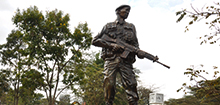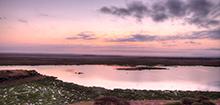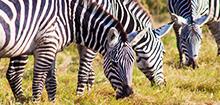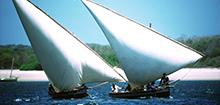About 8% of the Kenya’s land mass is protected area for wildlife conservation. Protected areas are gazetted landscapes/seascapes that have been surveyed, demarcated and gazetted either as National Parks and/or National Reserves. In Kenya, Protected areas embrace various types of ecosystems namely: forests, wetlands, savannah, marine, arid and semi-arid. The protected areas comprise of 23 terrestrial National Parks, 28 terrestrial National Reserves, 4 marine National Parks, 6 marine National Reserves and 4 national sanctuaries. In addition KWS manages over a hundred field stations/ outposts outside the protected areas. As noted above protected areas in Kenya are categorized either as parks or reserves. The distinction between the two categories is: in parks there is complete protection of natural resources and the only activities allowed are tourism and research. On the other hand in reserves, human activities are allowed under specific conditions. These activities are for instance fishing in marine reserves or firewood collection in terrestrial reserves. It is worth mentioning that a lot of Kenya’s wildlife lives outside Protected Areas, this is because most of the protected areas are not fully fenced, and hence wildlife moves in and out of these areas in search of pasture and water during certain periods within the year. When they move out of the protected areas, they interact with people on private and community land causing human wildlife conflict. This therefore requires that KWS embraces a strategic partnership with communities living in wildlife areas.

The goal in establishing and managing protected areas is to protect, maintain and develop Kenya’s natural wildlife resources for the benefit and enjoyment of present and future generations of Kenyans and the people of the world. The key objectives of management are:
To enhance wildlife and visitor security.
To minimize human wildlife conflicts and support community conservation initiatives
To enhance the conservation education programs
To undertake and facilitate management oriented research.
To enhance tourism management with a view to maximizing the existing revenue potential of the PAs
To prepare and implement management plans for National Parks and National Reserves
To administer and co-ordinate international protocols, conventions and treaties regarding wildlife in all aspects in consultation and collaboration with other stakeholders
KWS Parks, Reserves and Stations operations are at two levels:- KWS Headquarters in Nairobi and at the field level
I KWS HEADQUARTERS
This is situated in Langata, Nairobi. The main roles at this level are to: advise, facilitate and coordinate activities in the field. Functions at the Headquarters are organized into Divisions. The management of parks, reserves falls under the Park and Reserves division.
- Parks and Reserves Division
The goal of the division is to enhance wildlife conservation & management inside and outside protected areas in partnership with communities & stakeholders through a skilled & equipped workforce.
Departments in the division:
- Regulatory Enforcement & Compliance Affairs
- Conservation Areas Management
- Wildlife Industry Governance and External Linkages
- Wetlands and Marine Conservation
II. FIELD OPERATIONS
To ensure the effective management of all the protected areas spread all over the country, Kenya Wildlife service has decentralized authority, resources and activities by creating eight conservation areas. These conservation areas are;
- Western
- Mountain
- Tsavo
- Southern
- Coast
- Central Rift
- Northern
- Eastern
Each of the area is headed by an Assistant Director. In each area are several parks and reserves headed by wardens who report to the assistant directors
Area strategy aims at:
- Enhancing devolution of activities and resources,
- Enhancing KWS’s presence country wide,
- Increasing KWS influence beyond protected areas,
- Improved collaboration with communities and stakeholders
- Increased management efficiency and effectiveness
The KWS Branding Programme began in the year 2005 and up to date about 20 National Parks & Reserves have been branded. For KWS branding has been about creating a unique identity for each park and improving public perception of the organization. The objectives of the branding programme have been to: increase revenue, improve the corporate image, Increase visitation, enhance good relations with communities adjacent to protected areas and to improve staff welfare.
Branding activities include;
- Wildlife management- restocking/translocation and invasive species management
- Infrastructure- roads, buildings, gates, ablution blocks, fences and signage
- Tourism- bandas, guesthouses, picnic sites, camp sites and nature trails
- Community projects- education, water, health and enterprise
- Staff welfare-housing and recreational facilities
- Advertising & publicity- Media campaigns and exhibitions
- Lake Nakuru National Park – branded as a “Bird Watchers’ Paradise” on August 10, 2005
- Amboseli National Park – branded as “Kilimanjaro Royal Court” on September 23, 2005
- Tsavo West National Park – branded as “Land of Lava, Springs & Man-Eaters” on November 8, 2005
- Tsavo East National Park – branded as the “Theatre of the Wild” on December 9, 2005
- Aberdares National Park –branded as the “Majestic Peaks, Moorlands, Falls and so much more” on March 3, 2006
- Kisite Mpunguti Marine Park – branded as “Home of the Dolphin and Coconut Crab” on April 27, 2006
- Ruma National Park – branded as “Dramatic Valley of the Roan Antelope, Oribi and so much more” on September 22, 2006
- Malindi Marine Park – branded as “Africa’s Oldest Marine Park, Magic Islands, Zebra Fish and so much more” on October 27, 2006
- Watamu Marine Park – branded as “Haven for Green Turtle, Unique Coral Garden, Mida Creek and so much more” on October 27, 2006
- Nairobi National Park – branded as “The World’s Only Wildlife Capital” on December 16, 2006:
- Nairobi Safari Walk & Nairobi Animal Orphanage - branded as “Refuges of the Wild” on December 16, 2006
- Ol Donyo Sabuk National Park - branded as the “ Ultimate Panoramic Experience” on June 21, 2007
- Mt. Elgon National Park - branded as “Untamed Wilderness, Secluded Splendor” on March 15, 2007
- Kakamega Forest National Reserve- branded as “Canopy of Natural Beauty” on September 27, 2007
- Meru National Park – branded as “Complete Wilderness” on July 19, 2007:
- Hells Gate National Park- branded as “A Walk on the Wild Side” on September 25, 2009
- Mt Longonot National Park - branded as “Sheer Adventure” on September 25, 2009
- Ndere Island National Park- branded as “The Island of Serenity and Beauty” on March 3, 2010
- Kisumu Impala Sanctuary – branded as “A Lakeshore Walk With the Impalas” on March 4, 2010
- Shimba hills National Reserve- branded as “Paradise of the Sable Antelope” on April 18, 2011
- Mt Kenya National Park- branded as “Come touch the sky” on November 17, 2011
- Mombasa Marine National Park & Reserve- branded as “The allure of Kenya’s coast” on June 27, 2012





